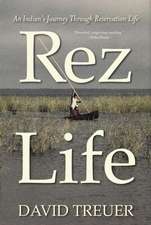Inman Park: Images of America (Arcadia Publishing)
Autor Christine V. Marr, Sharon Foster Jonesen Limba Engleză Paperback – 31 aug 2008
| Toate formatele și edițiile | Preț | Express |
|---|---|---|
| Paperback (1) | 131.94 lei 3-5 săpt. | |
| Arcadia Publishing (SC) – 31 aug 2008 | 131.94 lei 3-5 săpt. | |
| Hardback (1) | 181.89 lei 6-8 săpt. | |
| – | 181.89 lei 6-8 săpt. |
Din seria Images of America (Arcadia Publishing)
-
 Preț: 133.17 lei
Preț: 133.17 lei -
 Preț: 133.00 lei
Preț: 133.00 lei -
 Preț: 131.94 lei
Preț: 131.94 lei -
 Preț: 133.00 lei
Preț: 133.00 lei -
 Preț: 133.00 lei
Preț: 133.00 lei -
 Preț: 127.20 lei
Preț: 127.20 lei -
 Preț: 127.39 lei
Preț: 127.39 lei -
 Preț: 132.35 lei
Preț: 132.35 lei -
 Preț: 173.20 lei
Preț: 173.20 lei -
 Preț: 117.50 lei
Preț: 117.50 lei -
 Preț: 132.54 lei
Preț: 132.54 lei -
 Preț: 118.13 lei
Preț: 118.13 lei -
 Preț: 133.17 lei
Preț: 133.17 lei -
 Preț: 131.94 lei
Preț: 131.94 lei -
 Preț: 128.26 lei
Preț: 128.26 lei -
 Preț: 133.00 lei
Preț: 133.00 lei -
 Preț: 133.17 lei
Preț: 133.17 lei -
 Preț: 133.00 lei
Preț: 133.00 lei -
 Preț: 131.94 lei
Preț: 131.94 lei -
 Preț: 133.41 lei
Preț: 133.41 lei -
 Preț: 127.20 lei
Preț: 127.20 lei -
 Preț: 131.94 lei
Preț: 131.94 lei -
 Preț: 120.40 lei
Preț: 120.40 lei -
 Preț: 131.72 lei
Preț: 131.72 lei -
 Preț: 127.20 lei
Preț: 127.20 lei -
 Preț: 131.94 lei
Preț: 131.94 lei -
 Preț: 132.76 lei
Preț: 132.76 lei -
 Preț: 131.94 lei
Preț: 131.94 lei -
 Preț: 136.28 lei
Preț: 136.28 lei -
 Preț: 127.39 lei
Preț: 127.39 lei -
 Preț: 133.17 lei
Preț: 133.17 lei -
 Preț: 133.00 lei
Preț: 133.00 lei -
 Preț: 133.41 lei
Preț: 133.41 lei -
 Preț: 117.72 lei
Preț: 117.72 lei -
 Preț: 133.17 lei
Preț: 133.17 lei -
 Preț: 117.72 lei
Preț: 117.72 lei -
 Preț: 133.00 lei
Preț: 133.00 lei -
 Preț: 128.26 lei
Preț: 128.26 lei -
 Preț: 132.13 lei
Preț: 132.13 lei -
 Preț: 132.13 lei
Preț: 132.13 lei -
 Preț: 131.94 lei
Preț: 131.94 lei -
 Preț: 131.94 lei
Preț: 131.94 lei -
 Preț: 133.41 lei
Preț: 133.41 lei -
 Preț: 133.41 lei
Preț: 133.41 lei -
 Preț: 131.94 lei
Preț: 131.94 lei -
 Preț: 118.31 lei
Preț: 118.31 lei -
 Preț: 127.61 lei
Preț: 127.61 lei -
 Preț: 131.94 lei
Preț: 131.94 lei -
 Preț: 131.94 lei
Preț: 131.94 lei -
 Preț: 133.41 lei
Preț: 133.41 lei
Preț: 131.94 lei
Nou
Puncte Express: 198
Preț estimativ în valută:
25.25€ • 27.42$ • 21.21£
25.25€ • 27.42$ • 21.21£
Carte disponibilă
Livrare economică 02-16 aprilie
Preluare comenzi: 021 569.72.76
Specificații
ISBN-13: 9780738567310
ISBN-10: 0738567310
Pagini: 126
Dimensiuni: 165 x 234 x 8 mm
Greutate: 0.3 kg
Ediția:Adnotată
Editura: Arcadia Publishing (SC)
Seria Images of America (Arcadia Publishing)
ISBN-10: 0738567310
Pagini: 126
Dimensiuni: 165 x 234 x 8 mm
Greutate: 0.3 kg
Ediția:Adnotată
Editura: Arcadia Publishing (SC)
Seria Images of America (Arcadia Publishing)
Descriere
The story of Inman Park, Atlanta's first planned suburb, is one closely tied with transportation ingenuity, trade, and the progressive determination of its citizens. Situated two miles east of downtown Atlanta, Inman Park was farmland when the Civil War ravaged its rolling hills. In the 1890s, Inman Park bloomed into Atlanta's first residential park, the location of choice for Atlanta's social elite. The growth of Atlanta, however, struck a blow to the development of this utopian suburb. By the mid-20th century, the suburb fell into dilapidation, abandoned by the prominent families of Atlanta. It was not until the 1970s that the neighborhood, like Atlanta itself, was raised from its ashes to become the celebrated example of Victorian restoration that it is today and was added to the National Register of Historic Places.
Recenzii
Publication: The Atlanta Journal-Constitution
Article Title: A neat neighborhood full of history and hope
Author: Catherine Fox
Date: 10/19/08
Non Fiction.
Inman Park. By Christine V. Marr and Sharon Foster Jones. Arcadia. $19.99. 126 pages.
The verdict: Who knew that sprawl started so elegantly?
Inman Park was Atlantaas first suburb. Joel Hurtas concept of a posh neighborhood only a trolley ride from downtown attracted prominent Atlantans such as Asa Griggs Candler and Ernest Woodruff, who built the Victorian manses that still line Edgewood Avenue and hunted foxes in Springvale Park.
The neighborhood has suffered its share of travails. Dark years followed its heyday, 1890 to 1910, when wealthy residents decamped for Druid Hills and later left Atlanta altogether. And the area endured three Battles of Atlanta: Built on the ruins of Civil War plantations, it narrowly avoided being plowed under for a 12-lane expressway in the early a60s, and its residents spent the a80s fighting Freedom Parkway.
Inman Park has its battle scars. Steps to nowhere on North Highland Avenue, for instance, are tombstones of houses razed for the highway. But the neighborhood survived and is now a thriving community.
Christine V. Marr and Sharon Foster Jones chronicle its up and downs in aInman Parka (Arcadia Publishing, $19.99), a book that features more than 200 intelligently annotated vintage photos as well as an informative essay and chapter introductions that provide context. The book belongs to the South Carolina publisheras national series aImages of America, a which includes profiles of a number of metro Atlanta towns and neighborhoods, including College Park, Marietta and Druid Hills.
The authors, both Inman Park residents (Jones still lives there) and amateur historians, met while docents for Atlanta Preservation Centeras walking tours of their neighborhood. Jones interviewed residents and flushed out a host of stories and family photos. Marr combed local archives and came up with plat maps, old advertising circulars and news articles as well as photos.
Their result is more than a neighborhood scrapbook. It represents, in many ways, the universal trajectory of Americaas urban communities. Riven first by the automobile, then by racial fears. Resettled by urban pioneers. Resuscitated by the preservation movement. Revalidated by new urbanism. aInman Parka is a cautionary tale with a happy ending.
Title: Reading Room
Author: Julie Bookman
Publisher: Charleston Style and Design Magazine
Date: Winter 2009
At the Little Five Points Pharmacy within the colorful hippie district due east of downtown Atlanta, proprietor Ira Katz can't keep the new soft cover Inman Pork in stock. That's because Ira's - as locals call his drugstore - sits on the edge of Inman Park, aAtlanta's first suburb," circa 1890. Ira's customers are grateful that someone finally put a book together on their neighborhood of lovingly restored Victorians rooted in early city history.
Inman Park is but one of some 3,900 titles to date in Arcadia Publishing's fine Images of America series. Launched in 1995. the series is particularly strong on subjects relating to both Georgia (from Avondale Estates to Historic Roswell) and South Carolina (from Ashley Hall and Boone Plantation to Mount Pleasant, The Friendly Town and Sweetgrass Baskets). An interactive map on the publisher's website helps you find titles in any region: www.arcadiapublishing.com.
All titles cost $19.99 and stick tight to a formula that works. A cover image in sepia sets a nostalgic mood. Some 200 photographs (plus maps, drawings, old postcards) are thoughtfully arranged within 126 pages. Generous captions reveal the history.
"I breathed a sigh of relief when I saw it in print, a says Inman Park co-author Sharon Foster Jones, "because I knew the images and stories would be safe and not lost in oblivion.a
Article Title: A neat neighborhood full of history and hope
Author: Catherine Fox
Date: 10/19/08
Non Fiction.
Inman Park. By Christine V. Marr and Sharon Foster Jones. Arcadia. $19.99. 126 pages.
The verdict: Who knew that sprawl started so elegantly?
Inman Park was Atlantaas first suburb. Joel Hurtas concept of a posh neighborhood only a trolley ride from downtown attracted prominent Atlantans such as Asa Griggs Candler and Ernest Woodruff, who built the Victorian manses that still line Edgewood Avenue and hunted foxes in Springvale Park.
The neighborhood has suffered its share of travails. Dark years followed its heyday, 1890 to 1910, when wealthy residents decamped for Druid Hills and later left Atlanta altogether. And the area endured three Battles of Atlanta: Built on the ruins of Civil War plantations, it narrowly avoided being plowed under for a 12-lane expressway in the early a60s, and its residents spent the a80s fighting Freedom Parkway.
Inman Park has its battle scars. Steps to nowhere on North Highland Avenue, for instance, are tombstones of houses razed for the highway. But the neighborhood survived and is now a thriving community.
Christine V. Marr and Sharon Foster Jones chronicle its up and downs in aInman Parka (Arcadia Publishing, $19.99), a book that features more than 200 intelligently annotated vintage photos as well as an informative essay and chapter introductions that provide context. The book belongs to the South Carolina publisheras national series aImages of America, a which includes profiles of a number of metro Atlanta towns and neighborhoods, including College Park, Marietta and Druid Hills.
The authors, both Inman Park residents (Jones still lives there) and amateur historians, met while docents for Atlanta Preservation Centeras walking tours of their neighborhood. Jones interviewed residents and flushed out a host of stories and family photos. Marr combed local archives and came up with plat maps, old advertising circulars and news articles as well as photos.
Their result is more than a neighborhood scrapbook. It represents, in many ways, the universal trajectory of Americaas urban communities. Riven first by the automobile, then by racial fears. Resettled by urban pioneers. Resuscitated by the preservation movement. Revalidated by new urbanism. aInman Parka is a cautionary tale with a happy ending.
Title: Reading Room
Author: Julie Bookman
Publisher: Charleston Style and Design Magazine
Date: Winter 2009
At the Little Five Points Pharmacy within the colorful hippie district due east of downtown Atlanta, proprietor Ira Katz can't keep the new soft cover Inman Pork in stock. That's because Ira's - as locals call his drugstore - sits on the edge of Inman Park, aAtlanta's first suburb," circa 1890. Ira's customers are grateful that someone finally put a book together on their neighborhood of lovingly restored Victorians rooted in early city history.
Inman Park is but one of some 3,900 titles to date in Arcadia Publishing's fine Images of America series. Launched in 1995. the series is particularly strong on subjects relating to both Georgia (from Avondale Estates to Historic Roswell) and South Carolina (from Ashley Hall and Boone Plantation to Mount Pleasant, The Friendly Town and Sweetgrass Baskets). An interactive map on the publisher's website helps you find titles in any region: www.arcadiapublishing.com.
All titles cost $19.99 and stick tight to a formula that works. A cover image in sepia sets a nostalgic mood. Some 200 photographs (plus maps, drawings, old postcards) are thoughtfully arranged within 126 pages. Generous captions reveal the history.
"I breathed a sigh of relief when I saw it in print, a says Inman Park co-author Sharon Foster Jones, "because I knew the images and stories would be safe and not lost in oblivion.a
Notă biografică
Similarly, this collection of photographs and ephemera has risen largely from the attics and trunks of Inman Park residents, a scrapbook of historical and personal gems. Many images come directly from 19th-century publications--most unseen since original publication. As residents of Inman Park, authors Christine V. Marr and Sharon Foster Jones met while serving the Atlanta Preservation Center. Together they bring their unique talents to share the story of Inman Park.







